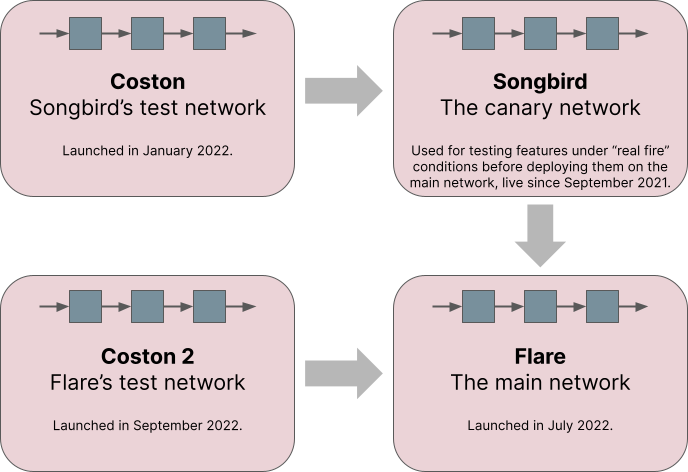What Is Flare?#

Flare is the blockchain for data. It is a layer 1, EVM smart contract platform designed to expand the utility of blockchain.
Flare's aim is to provide data as a public good, meaning that data is not controlled by a centralized entity and is available to all. The infrastructure providers, which perform doubly as validators and data providers, enable two native oracles, the FTSO and the Flare Data Connector. This native processing provides developers on Flare with efficient access to large amounts of data and data proofs at minimal cost, with which to build software on the platform.
By giving developers trustless access to the broadest range of data needed by the software they build, Flare can advance the development of more blockchain use cases where data is important, such as in DeFi, gaming, NFT, music, social networks, Real World Assets (RWAs), Machine Learning (ML), and Artificial Intelligence (AI).
Flare Protocols#
Flare has the following native data acquisition protocols at these stages of development:
- The Flare Time-Series Oracle (FTSO) provides continuous estimations of changing data, such as price pairs.
- The Flare Data Connector allows querying of verifiable, non-changing data from other chains and the internet.
- The FAssets system is being developed by Flare Labs. It allows tokens on blockchains that do not support smart contracts to be used trustlessly with smart contracts on the Flare blockchain.
Developing on Flare#
For information about developing on Flare, see the Flare Developer Hub.
Flare Networks#
Flare has 4 networks with different purposes:
- Flare is the main network, where
$FLRis the native currency. - Songbird is the canary network, where
$SGBis the native currency. Created with users in mind, it is meant for testing features under "real fire" conditions, before deploying them on the main network. - Coston is Songbird's public test network, created with developers in mind.
- Coston2 is Flare's public test network, created with developers in mind.

Flare Chains#
Flare uses two chains and is developing a built-in interoperability mechanism between them.
- C-Chain: The contract chain that is used for smart contracts. It is where the Ethereum Virtual Machine operates, and is the chain where the vast bulk of the community currently interact.
- P-Chain: The platform chain that accommodates staking and provides rewards to its validators.